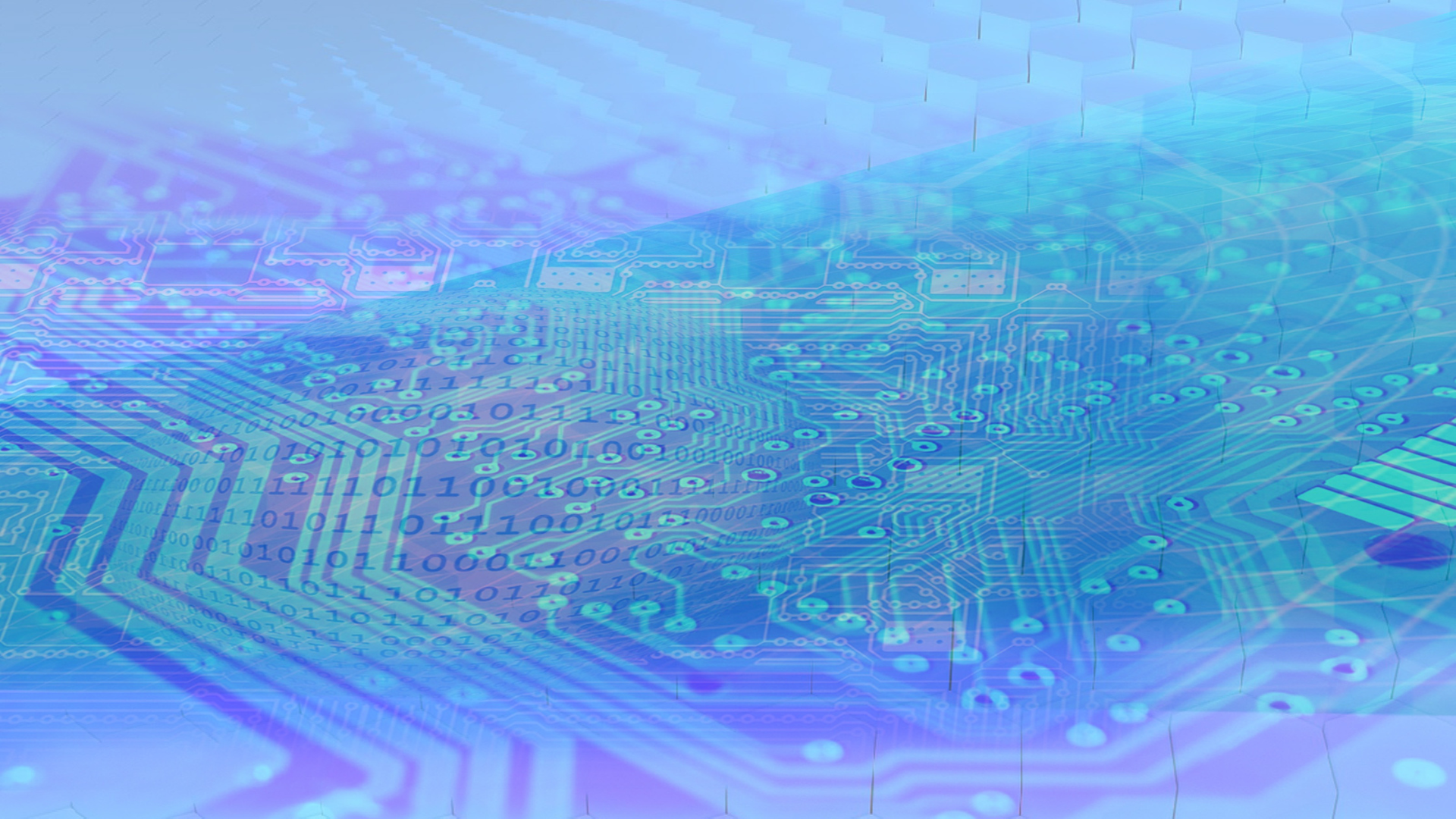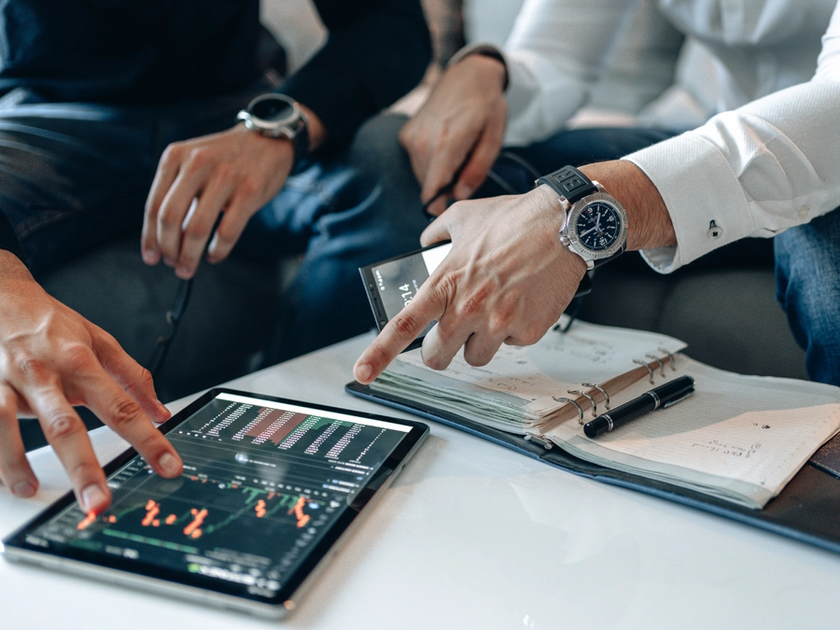What is blockchain?
A blockchain is a digital registry, where information is stored. That could be transaction information for instance - which is what cryptocurrency is built upon.
A blockchain is a digital registry, or ledger, where information is stored and kept. This could be transaction information, for instance - which is the registry cryptocurrency is built upon.
The ledger is distributed. That means that the registry is not shared with just one person or stored on one computer, but that it’s distributed over a network made up of several people or computers.
Additionally, the registry is chained together in blocks via cryptography. Which means that every piece of information in the registry is chained together with the previous piece of information. A block in a blockchain is thus a long string of information chained together.
A block of information can be chained together further with a new block. This creates a chain of blocks - or a blockchain.
The information is being chained together with cryptographic codes - for example a “transaction hash” which bitcoin and other cryptocurrencies use.
Therefore, the two most important elements of a blockchain are that:
- The registry is distributed
- Information is chained together in blocks via cryptography
What’s the idea of a distributed ledger?
When new information is added to a blockchain, the network must first verify the addition, which, among others, is used to detect foul play or criminal activity.
A potential hacker must then not only hack a single computer, but an entire network of computers, before they can tamper with the information in the registry, or ledger.
Example: Imagine a hacker called John Hansen, who is making changes in a transaction registry. John Hansen sees transaction information on a transfer on 100,000 DKK to Skat (The Danish Taxation Authority).
Before the money has been transferred, John Hansen hacks his way into the registry and changes the name of the recipient from Skat to John Hansen. Now, John Hansen is 100,000 DKK richer. This weakness in the registry - the fact that John Hansen only has to hack a single computer to get away with criminal activity - is a lot harder, when the registry is built on blockchain technology.
All persons or computers in the blockchain network have a copy of the registry with transaction information. When John Hansen then changes the transaction to make it look like he’s the recipient of the money, everyone else in the network will be able to see that it’s foul play.
The network updates their copy of the registry daily, and everyone in the network has the same information put down on the aforementioned transaction - the money has to go to Skat, not John Hansen.
In this way, it’s obvious that someone has tried to tamper with the system. That’s essentially how a distributed ledger, or registry, works.
Bonus info:
Persons or computers in a blockchain network are in layman terms also called “nodes”.
What’s the idea with chains and cryptography?
After a transaction has been verified by the network it can be added to the blockchain. Here, it will be chained together with the previous piece of information added to the registry.
In this way, a blockchain is made up of a long string of interlaced information. Each piece of information points back to the previous one. The chaining happens through “cryptography” - meaning encrypted ID-codes.
This creates a very transparent and trustworthy transaction history.
Example: Say you were to purchase something from Sophie with crypto. This will be registered with the code “A”.
In code “A” a number of details will appear: Sophie's name, your name, and the price of the item purchased.
Sophie now uses the money you've paid her to purchase something else.
This will be registered in the blockchain with code “B”, where details about buyer, seller, and price also will appear. But there will also be information about the previous transaction found - so when we view Sophie’s transaction in the blockchain, we will see code “B”, but also “A”.
And that will keep going on and on.
Next transaction will include the codes “B” + “C”. Next transaction will contain the codes, “C” + “D”.
In reality, the kodes are much more complicated. For example, a code could look like this:
6146ccf6a66d994f7c363db875e31ca35581450a4bf6d3be6cc9ac79233a69d0.
You can look up codes (or “transaction hashes”) on Etherscan.io .
Any transaction via blockchains can therefore be tracked all the way back to the very first transaction in the registry - also known as the “Genesis Block”.
What else can you use blockchain for?
Blockchain may be most famous for its connection to bitcoin and transactions, but the blockchain technology is kind of a multi-purpose tool.
Here are some examples of areas where blockchain technology is already or can be used:
Value chains
Value chains is an obvious field where blockchain technology can be used. There are many steps in a value chain, and by having all movements in the chain under control, you can easily get a more coordinated view of the situation.
Example:
Imagine Mærsk and all the containers they have to keep in check in their registry.
By registering all outgoing and incoming containers in a blockchain, Mærsk will always know where a container came from, where it’s going, and who handled it on its way. All with an added layer of security, thanks to the distributed ledger.
International trading
When you’re transferring money across country borders, it requires different approvals from local governments, making the process heavy and slow.
Example:
You’re sending 100 DKK to Maria Jensen, who is located in Canada. First, your bank needs to approve the transaction. Then, your bank needs to coordinate with Maria Jensen’s Canadian bank, who in turn also needs to approve the transaction.
This also implies some manual work from the banks’ side, which could take some time. The result of which can be delayed payments.
With a blockchain, transactions would be more or less automatic. The transaction is verified by the network, and the money is ready to be transferred.
That system was already created by Banco Santander in 2018, for example.
Combatting money laundering
Money laundering is a real issue for many communities around the world, and Denmark is no exception. By developing a financial system based on blockchain, a lot of money laundering would be hindered in theory.
Take the example from earlier with the hacker, John Hansen. Here, John Hansen was quickly exposed, and his attempt at tampering with tax payments was immediately stopped.
Learn more about blockchains
Learn more about blockchains
Get started with crypto today
- 1
Download Lunar for free
Go to App Store or Google Play and download the Lunar app. Find your photo ID, as you need that to sign up.
- 2
Sign up to Lunar Block in the app
Find Lunar Block under “Products” and sign up. You’ll be asked to take a test about crypto first - among others things, it’s to see if you’re aware of the risks. You can learn more about the risks in the app before you take the test.
- 3
Buy cryptocurrency with a single swipe
When we’ve approved you, you can buy crypto immediately. Choose your cryptocurrency in the app and buy with a single swipe.
Be aware of risks
When you trade cryptocurrency, you have to be aware that all trading involves a risk. The value of cryptocurrency can go both up and down, and in some cases, you may lose the entire amount you have purchased cryptocurrency with.
Cryptocurrency trading is done through Lunar Block. Lunar Block is not regulated by the Danish Financial Supervisory Authority (Finanstilsynet). That means you won’t have the same protection as when trading e.g. stocks or other regulated assets.
Last updated April 18, 2023. We’ve collected general information. Please note, that there may be specific circumstances that you and your business need to be aware of.
You might also like...
Where can I pay with solana?
Cryptocurrency is becoming so widespread and acknowledged abroad that you can use the currency just like regular payment methods on some...
How do you buy solana as regular stocks?
Because solana (SOL) is a currency, and not a business, you can’t actually invest directly in solana like it’s a stock.
Are cryptocurrencies a good investment?
Cryptocurrencies can be a great addition to your portfolio - if you’re willing to run the risk. Cryptocurrencies are “high risk - high...
What is bitcoin?
Bitcoin is a digital currency, or cryptocurrency, as it’s also called. Bitcoin is the first and largest cryptocurrency measured on market...


